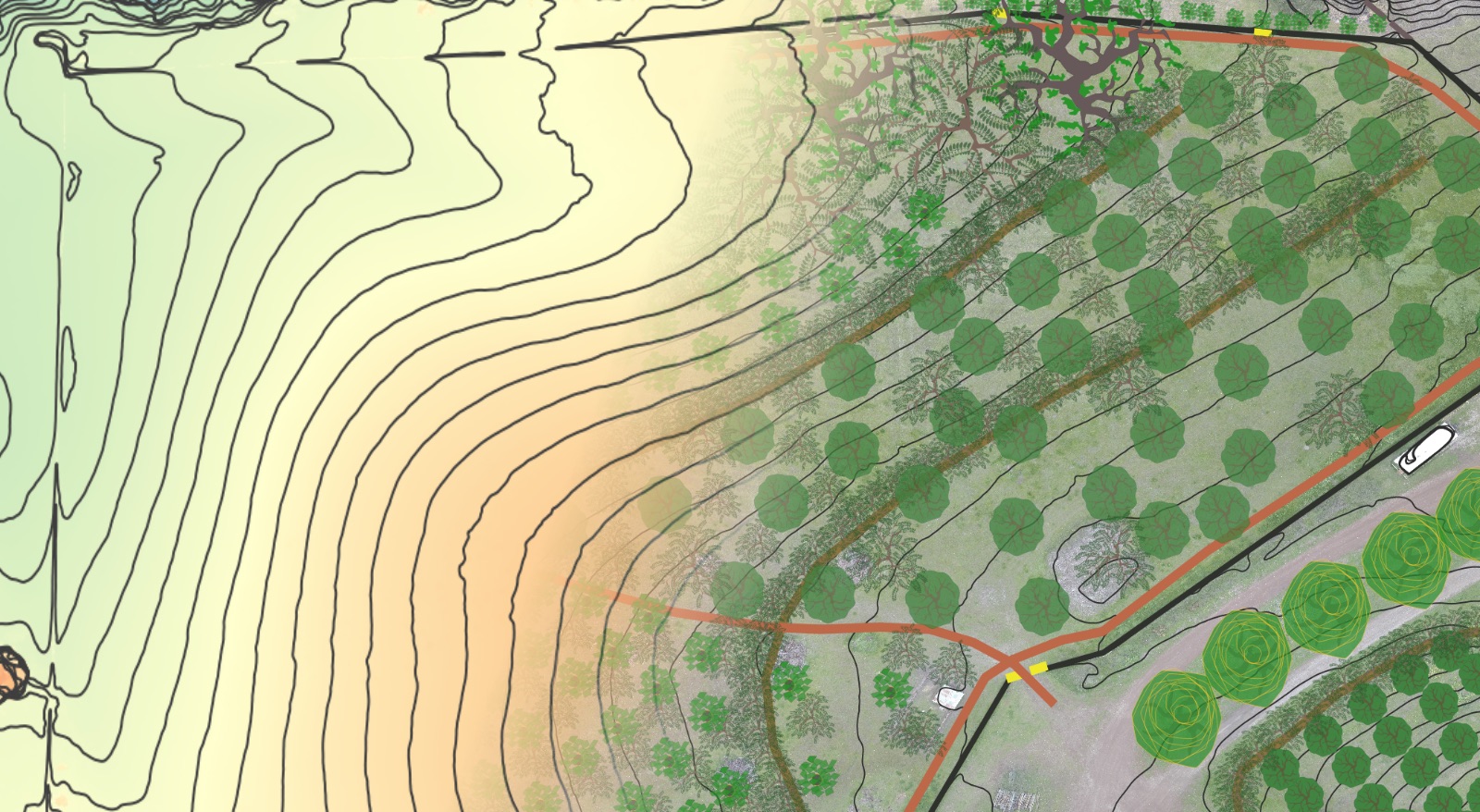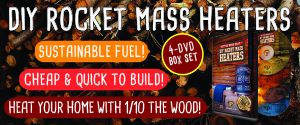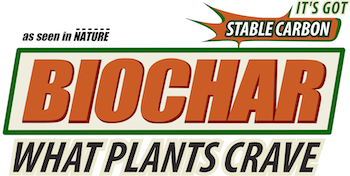Welcome To The Regenerative Economics Series
Regenerative Economics series is all about creating new ways to transact value outside the boundaries of State power, in service of Mother Earth, her people and creatures, and future generations.
- The Regenerative Agora: Counter-Economics For Stewards Of The Future
- Borrowing Without Intent To Repay: How Modern Fiat Currency Systems Concentrate Wealth By Design
- Creating Wealth With The 8 Forms Of Capital
- The 7th Generation Principle: Designing Ecosystems For Continuity Across Generations
- Exchanging Value In The Regenerative Agora: Cryptocurrency As A Medium Of Exchange
If you want to live life on your own terms, you have to control your income generation to the greatest extent possible.
This is true always.
It becomes absolutely critical (to the point of it being life or death) amidst rising totalitarianism (i.e. what we are living through right now).
Income needs to be generated with minimal reliance upon centralized systems of production, distribution, and payment (the control levers of the State) if it is to be at all reliable when things get pear-shaped (which, if history is at all predictive of human behavior, they will).
We are living through such a shift right now – a time during which things that make no rational sense are held up as common knowledge and virtuous by the powers that be, such as:
- advertising one’s own victimhood as the key to personal advancement;
- debt as the key to wealth;
- comfort as more desirable than fulfillment;
- safety and security as inviolable positive rights for which individual choice and autonomy should be sacrificed;
- an invisible, odorless gas that makes up .0415% of our Earthly atmosphere (that’s 4/100ths of one percent folks), and that contains the same element that all life on Earth is made of, is turning the Earth into an oven that is going to cook us alive;
- wearing a napkin on one’s face will prevent viral infection;
- that science is something to be believed in, instead of rigorously questioned and tested;
- that war is essential for peace;
…and so on.
Given the dubious list of mainstream narratives above, wouldn’t it be worth re-examining any and all conventional thinking around our livelihoods?
You better believe it.
If we wish to live free, healthy, and sovereign lives in this time we need to create our own personal economies – starting at the individual household level and growing outward from there – and those economies must be regenerative if they are to sustain an independent, healthy and free lifestyle.
- Economy here refers to all of the elements and the relationships between them (combined to form enterprises) that serve to generate surplus (wealth) in order to provide for a certain desired quality of life in a given place.
- Regenerative is a quality of said economy – i.e. our economic activity must create more resources that enable greater life expression capacity within the surrounding ecology. This is the only way an enterprise to become truly sustainable.
So how can we go about creating livelihoods that will produce what we need to have a high quality of life and create an ecosystem that is better off for us having lived that life than not?
Threading The Needle: An Emergent Framework For Creating Your Regenerative Livelihood
The following framework is the combination of the teachings of many giants, and represents my current best approach to building a regenerative livelihood. Many thanks to the many mentors, and their teachers before them, who have shared their wisdom through the written and spoken word; Allan Savory, Joel Salatin, Jason Leister, Jason Stapleton, Chris Martenson, Geoff Lawton, Tom Woods, Toby Hemenway, Sepp Holzer, Bill Mollison, David Holmgren and of course…Mother Nature.
For a regenerative livelihood to actually be a livelihood (intentional activities that generate a surplus capable of providing for your lifestyle) and be regenerative (creates more resources for life expression) it must be context-specific.
For an enterprise to be context-specific is must be 1) uniquely adapted to the place and time in which it exists, and 2) aligned with the values, beliefs and priorities of the people running it.
To generate ideas for context-specific enterprise potentials we examine the intersection of the following five factors separated out into three categories: PERSONAL, ECOLOGICAL and ENERGETIC & ECONOMIC.
- PERSONAL: Of or relating to the individual(s) running the enterprise.
- Passion – What do you like to do?
- Skill – What are you good at?
- ECOLOGICAL: Of or relating to the local ecology and environment.
- Inherent Ecological Advantage – What is your landscape innately good at?
- ENERGETIC & ECONOMIC: Staying profitable in every sense of the word.
- Affordability & Sustainability – What can you afford to start and sustain (financially, legally, materially, spiritually, energetically, mentally, physically, ecologically etc)?
- Demand – What problem are people willing to pay you to solve for them?

Soapbox PSA Intermission
Before proceeding any further into brainstorming your regenerative livelihood – do you know WHY you want to do it? And I mean your BIG WHY, the one that makes your heart flutter, brings tears to your eyes, and will spur you to action no matter how tough things get?
If you had to pause and think before answering that…or didn’t have an answer, you need to get that straight FIRST before proceeding.
I recommend starting by creating your Minimum Holistic Goal.
Creating your Minimum Holistic Goal is the one thing that will make everything else easier or unnecessary on your homesteading and regenerative livelihood journey.
Click the button above to sign up for the Minimum Holistic Goal Creation Mini-Course. It is and always will be completely free.
PERSONAL FACTORS
1. Passion
Passion is about discovering what you have to give and how to best give it. Passion lies at the core of the answers to the following questions:
- What do you love doing?
- What would you do whether or not you got paid to do it?
- What is your true work?
- What is the problem your Gift can solve?
- My Gift means I’m good at….
- My Gift solves what problem?
- For whom?
- What do they get?
If these questions are proving difficult to answer, it’s time to go inward and do some self-discovery work. The following resources have proven themselves helpful guides to me over the years:
Resources For Finding Your Gift
- Chaordic Steps For Lifestyle Design – The Chaordic Stepping Stones applied to intentional lifestyle design at the individual and family level.
- Human Design
- Jovian Archive – Generate your own Human Design map.
- HumanDesign.tools – Learn what the information contained within your map means.
- Gene Keys – A further evolution of Human Design and the I Ching, the Gene Keys guides you to uncover your unique gifts through deep contemplation of your unique genetic patterning as it relates to your Life’s Work (what you are here to do), Evolution (what you are here to learn), Radiance (what keeps you healthy), and Purpose (what deeply fulfills you). The Gene Keys is a journey that can span lifetimes, but also has amazing insights to offer immediately upon developing your own hologenetic profile and learning about your most influential Gene Keys. If you feel “stuck” or don’t have a clear connection to your BIG WHY, this might be just the guidance you’re looking for.
- 7 Trues Of Self – True Work, True Service, True Love, True Study, True Home, True Play, True Creativity.
2. Skill
Skills are the things you are good at and can do competently and expediently, “better than the average bear” so to speak.
- What are you very good at?
- What do you bring to the table?
- What do people consistently ask you for help with?
- If you’re not skilled enough in a certain area currently, can you improve your skills to increase the value you can bring to the table?
ECOLOGICAL FACTORS
3. Inherent Ecological Advantage
A regenerative enterprise by definition works with Nature, not against it. By aligning the inherent work rhythms, inputs, and outputs of an enterprise with Nature’s movement towards ecosystem complexity and stability, tremendous efficiencies can be realized, resilience is fostered, satisfaction and joy are maximized, and a deep sense meaning is generated from one’s work – not to mention the entire enterprise is made much more ‘shock proof’ to many man-made and natural disasters.
Mother Nature has broad shoulders and a strong back and never takes a day off – help her help you do the work.
“If we throw nature out the window, she comes back in the door with a pitchfork.”
Masanobu Fukuoka
By identifying the direction and composition of natural succession within your landscape, it is possible to align the necessary forms of production within an enterprise with those things that the ecosystem produces in abundance by default. In this way an enterprise can use and value Nature’s gifts by collaborating with and leveraging already existing succession trends and climate characteristics. This greatly benefits the bottom line, however you measure it.
- What things does your landscape produce in abundance without any effort on your behalf?
- What is your landscape working to become?
- What “climax” ecotopes exist or existed nearby?
- What can they tell you about what your landscape is or was, and where and when it is on its journey to becoming that climax ecotope again?
- What natural energies are present and functioning in this ecological succession?
- How can you align your systems of production to “piggyback” them?
- What “climax” ecotopes exist or existed nearby?
- What is your landscape’s “unfair ecological advantage”?
- HINT: What are those things that, when people come to visit you, you repeatedly here them say “If only we had X like you have, then we could…”.
ECONOMIC & ENERGETIC
4. Profitability
A regenerative enterprise must be profitable – meaning the value received in exchange for providing the good or service must be greater than the costs of operating the enterprise.
The enterprise must also be scaled appropriately to your context in order to be profitable.
Directly related to scale, a regenerative enterprise must be affordable to establish and maintain – i.e. the capital required to start the enterprise must be available in sufficient amounts and obtainable in ways that do not degrade or diminish the ability to produce the product or provide the service that is the entire purpose for the existence of the enterprise (the means by which it creates wealth).
Affordability (ECONOMIC)
- How much capital is required to start this enterprise?
- What capital is available to start the endeavor?
- What is the cost of acquiring or applying it?
- What is affordable to produce?
- What are the input costs for providing your service or producing our product?
- Which enterprises contribute the most to covering the overheads of the business / your lifestyle?
- Which elements, systems or enterprises bring in the most money for the least additional cost?
- Market Research – Does the product or service have a profit margin large enough to realize the Quality of Life you desire?
- Is there enough profit margin built into the enterprise to keep it and its operators going and incentivized?
REMEMBER: Consider fixed costs (those that are constant in a given enterprise – like interest payments borrowed money or) vs. variable costs (those that vary with scale of production – the more you do/make the more of X you need) when performing this analysis. Determine which scale is being used to evaluate a given enterprise – i.e. gross profit per acre, per dollar of capital or per human-hour of labor.
Sustainability (ECOLOGICAL)
Assess the sustainability of the proposed enterprise using the following guiding questions:
- Self Knowledge – Does this feed my spirit?
- Does this work renew my being?
- Am I excited to do this work?
- Ecological Impacts – What categories of resources are utilized in running this enterprise?
- Use the Regenerative-Degenerative Continuum to map out the types of resources being used and the mindset directing their use.
- Where are the ecological shortcomings in the resource use profile?
- How can the resource use profile be pushed towards the upper right quadrant in the image below – that of Regenerative Process and Abundant Mindset?

The 5 Categories Of Resources
- Those Which INCREASE By Modest Use. Examples: Often living things such as seeds and plants that sprout when browsed or cut, rare breeds of plants and animals when raised wisely, and recycled biomass. In the case of green browse; if deer do not browse shrubs, the latter may become woody and unpalatable. Seedling trees can be maintained at browse height, but if ungrazed, “escape” to unbrowsable height and shade out other palatable plants. Information is another resource that can increase with use. It withers or is outdated if not used. Too little information impoverishes a system, but when freely used and exchanged, it flourishes and increases. This includes languages and cultural knowledge. Generally speaking, most complex adaptive systems, living or not, increase when used.
- Those Which DISAPPEAR Or DEGRADE If Not Used. Examples: The unharvested crop of an annual, or a grass which could be stored for winter hay, irruptions of oceanic fish, swarms of bees or grasshoppers, ripe fruit, water run-off during rains, muscles, bones, manures, some skills, perishable foods, languages and cultural knowledge.
- Those UNAFFECTED By Use. Examples: A beautiful view or a good climate is unaffected by use. The partial diversion of a stream to hydroelectric generation or irrigation (the water being responsibly returned to the stream after use), is also unaffected, as is a stone pile as mulch, heat store or water run-off collector. A well-managed ecosystem is an example of resources unaffected by use.
- Those REDUCED By Use. Examples: A fish or wild game stock unwisely managed, anything that is mined (clay, landlocked salt deposits, coal, oil, rare earth minerals, fertile soils, mature forests).
- Those Which POLLUTE or DESTROY Other Resources If Used. Examples: Residual poisons dumped into ecosystems from industrial centers (toxic wastes in rivers, toxic gases into the air etc), radioactive, super-highways, large buildings or areas that are concreted/paved over, sewers running pollutants to the sea, agricultural -ides that destroy soil ecology, toxic reagents. NOTE: In many cases, the way in which a resource is used will shift its categorization – soils farmed industrially being an example, are ultimately rendered toxic and dead, not only incapable of supporting life, but also a threat to other life-forms when it (inevitably) erodes by wind and water (see Salton Sea and Mississippi Dead Zone as examples).
5. Demand
Demand is the smallest circle that sits directly in the middle of the four overlapping spheres.
It is the final bullseye that you need to hit.
An endeavor or enterprise may be affordable, sustainable, aligned with inherent ecological advantage of place, and be something you are both skilled at and passionate about BUT – if no one (or not enough people) value it enough to exchange their life energy for it in ample quantity to make it worth your while, it is not a viable regenerative livelihood.
Many regenerative enterprises are born before their time, lacking the population-wide awareness and support held in the reservoir of cultural capital. Finding that sweet spot where regenerative enterprise meets the needs of the market today while simultaneously laying the groundwork for a healthier, ecologically-sound future is very challenging. It is also very rewarding. Education-based marketing and messaging are often key in sowing, nurturing and rooting a regenerative value set amongst the people being served by the enterprise, and in so doing creating a market where none was before.
- What are people willing to pay you to do for them?
- What problems are they looking to have solved?
- What are the pain points driving them to take action that YOU can solve?
- Who/What/Where/How Big is the market for what you want to offer?
- What does your market (local, bioregional, international etc.) exhibit a demand for?
- How can you uniquely position yourself so that you become the only option in the mind of your prospect simply because no one else is you?
Marketing & Positioning Resources
- Sovereign Business Platform Lab – Develop your own unique platform for consistently distributing value to prospective clients that demonstrates what you do and how you do it in many ways, over time. These demonstrations do not “sell” you – they allow prospective clients to sell themselves to you – all you have to do is serve them with your Gift.
Explore The Entire Regenerative Economics Series
Regenerative Economics series is all about creating new ways to transact value outside the boundaries of State power, in service of Mother Earth, her people and creatures, and future generations.
- The Regenerative Agora: Counter-Economics For Stewards Of The Future
- Borrowing Without Intent To Repay: How Modern Fiat Currency Systems Concentrate Wealth By Design
- Creating Wealth With The 8 Forms Of Capital
- The 7th Generation Principle: Designing Ecosystems For Continuity Across Generations
- Exchanging Value In The Regenerative Agora: Cryptocurrency As A Medium Of Exchange





One response to “Creating Regenerative Livelihood: An Emerging Framework”
[…] Creating A Regenerative Livelihood – An Emerging Framework – blog post with all of the guiding questions and linked resources in […]